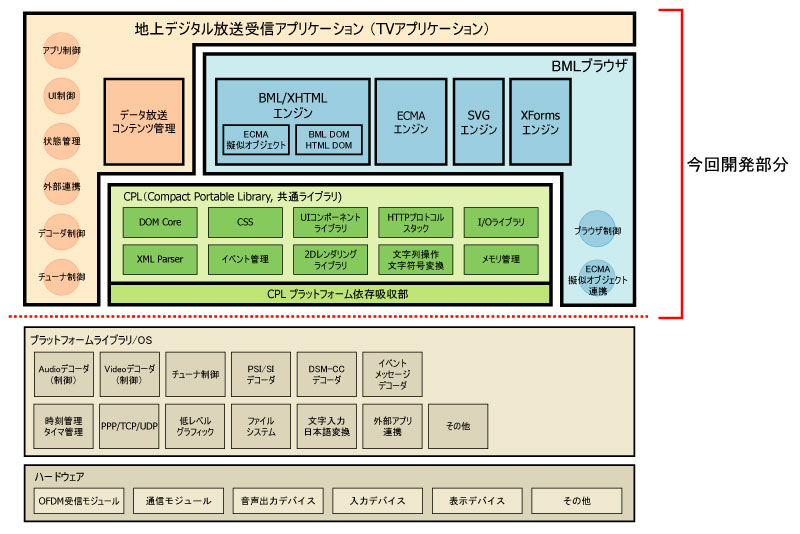Searching

Steven Pemberton, W3C/CWI, Amsterdam, The Netherlands
Researcher at the Dutch national research centre CWI (first European Internet site)
Co-designed the programming language ABC, that was later used as the basis for Python
In the late 80's designed and built a browser, with extensible markup, stylesheets, vector graphics, client-side scripting, etc. Ran on Mac, Unix, Atari ST
Organised 2 workshops at the first Web conference in 1994
Co-author of HTML4, CSS, XHTML, XML Events, XForms, etc
Chair of W3C HTML and Forms working groups
Until recently Editor-in-Chief of ACM/interactions.






After a decade of experience with HTML Forms, we now know more about what we need and how to achieve it.
Soundbite: "Javascript accounts for 90% of our headaches in complex forms, and is extremely brittle and unmaintainable."
XForms has been designed based on an analysis of HTML Forms, what they can do, and what they can't.
There are two parts to the essence of XForms. The first is to separate
what is being returned from how the values are filled in. 
The second part is that the form controls, rather than expressing how they should look (radio buttons, menu, etc), express their intent (this control selects one value from a list).
You then use styling to say how they should be represented, possibly with different styling for different devices (as a menu on a small screen, as radio buttons on a large screen).
Colour: red green blue
XForms gives many advantages over classic HTML Forms:
XForms has been designed to allow much to be checked by the browser, such as
This reduces the need for round trips to the server or for extensive script-based solutions, and improves the user experience by giving immediate feedback on what is being filled in.
Because XForms uses declarative markup to declare properties of values, and to build relationships between values, it is much easier for the author to create complicated, adaptive forms, and doesn't rely on scripting.
An HTML Form converted to XForms looks pretty much the same, but when you start to build forms that HTML wasn't designed for, XForms becomes much simpler.
XForms is properly integrated into XML: it is in XML, the data it collects in the form is XML, it can load external XML documents as initial data, and can submit the results as XML.
By including the user in the XML pipeline, it at last means you can have end-to-end XML, right up to the user's desktop.
However, it still supports 'legacy' servers.
XForms is also a part of XHTML2.
Rather than reinventing the wheel, XForms uses a number of existing XML technologies, such as
This has a dual benefit:
Data can be pre-loaded into a form from external sources.
Existing Schemas can be used.
It integrates with SOAP and XML RPC.
Doesn't require new server infrastructure.
Thanks to the intent-based controls, the same form can be delivered without change to a traditional browser, a PDA, a mobile phone, a voice browser, and even some more exotic emerging clients such as an Instant Messenger.
This greatly eases providing forms to a wide audience, since forms only need to be authored once.
Thanks to using XML, there are no problems with loading and submitting non-Western data.
XForms has been designed so that it will work equally well with accessible technologies (for instance for blind users) and with traditional visual browsers.
XMLDOMCSSJavascriptXHTMLXPathXForms
=Regular XHTML Browser
Time to build all of above: 3 programmers, 4 months
Total footprint (on IPAQ implementation): 400K (above Java VM)
In fact this is quite evolutionary: XForms uses existing W3C components. It is only the XForms processing model that describes when to calculate values that is really new.
Open standard
Wide industry support
Widely implemented
No vendor lock-in!
(If you think this is a good idea, join W3C!)
Take this simple HTML form:
<html>
<head><title>Search</title></head>
<body>
<form action="http://example.com/search" method="get">
Find <input type="text" name="q">
<input type="submit" value="Go">
</form>
</body>
</html>
The main difference in XForms is that details of the values collected and
how to submit them are gathered in the head, in an element called
model; only the form controls are put in the body.
So in this case you put the following in the head (XForms elements and attributes are in lower case):
<model>
<instance>
<data xmlns=""><q/></data>
</instance>
<submission
action="http://example.com/search"
method="get"
id="s"/>
</model>
The <form> element is now no longer needed; the
controls in the body look like this:
<input ref="q"><label>Find</label></input>
<submit submission="s">
<label>Go</label>
</submit>
<html http://www.w3.org/2002/06/xhtml2/" xml:lang="en">
<head>
<title>Search</title>
<model>
<instance>
<data xmlns=""><q/></data>
</instance>
<submission
action="http://example.com/search"
method="get" id="s"/>
</model>
</head>
<body>
<p>
<input ref="q"><label>Find</label></input>
<submit submission="s"><label>Go</label></submit>
</p>
</body>
</html>
Although in simple cases the instance element is optional, it
is good practice to include an explicit instance, like this:
<instance>
<data xmlns=""><q/></data>
</instance>
...
<input ref="q">
<label>Search</label>
</input>
ref="q"
that there really is a q in the instance.<data> here, but you can use any tag you
like.For initialising controls including initialising checked boxes, and selected menu items etc., you just supply an instance with pre-filled values. For the search example:
<instance>
<data xmlns=""><q>Keywords</q></data>
</instance>
would pre-fill the text control with the word Keywords.
results to the search form, we
change the instance to:<instance>
<data xmlns="">
<q/>
<results>10</results>
</data>
</instance>
<instance src="http://example.org/templates/t21.xml"/>
<data> <w>640</w> <h>480</h> <d>8</d> </data>
src="file:data.xml"This makes configuring hardware even easier than it now is: instead of the device hosting a web server that can deal with HTML Forms, all it has to do is deliver its configuration parameters as an XML document, and XForms provides the interface.
ref attribute on controls can be any XPath
expression<title> element in an
XHTML document
<input ref="/h:html/h:head/h:title">...
(i.e. the title element within the head
element within the html element, all in the XHTML
namespace)
class attribute on the body element:
<input ref="/h:html/h:body/@class">...
Suppose a shop has very unpredictable opening hours (perhaps it depends on the weather), and they want to have a Web page that people can go to to see if it is open. Suppose the page in question has a single paragraph in the body:
<p>The shop is <strong>closed</strong> today.</p>
Well, rather than teaching the shop staff how to write HTML to update this, we can make a simple form to edit the page instead:
<model>
<instance
src="http://www.example.com/shop.xhtml"/>
<submission
action="http://www.example.com/shop.xhtml"
method="put" id="change"/>
</model>
...
<select1 ref="/h:html/h:body/h:p/h:strong">
<label>The shop is now:</label>
<item><label>Open</label><value>open</value></item>
<item><label>Closed</label><value>closed</value></item>
</select1>
<submit submission="change"><label>OK</label></submit>
XForms has equivalent controls for everything that you can do in HTML.
But there is an important difference: XForms controls are not presentation based, but intent-based – they say what they are meant to achieve not how they do it.
For instance, a select control
<select1 ref="country"> <label>Country</label> <item><label>Netherlands</label><value>nl</value></item> <item><label>United Kingdom</label><value>uk</value></item> <item><label>France</label><value>fr</value></item> </select>
can be represented using radio buttons, a drop-down menu, a select list (or anything else suitable you can think of)
depending on the style-sheet or the choice of the device.
Country Netherlands United Kingdom France
As already said, XForms has equivalents for all HTML controls, such as text, text boxes, selecting one or many, file upload, etc.
A user agent may adapt an input control based on knowledge of the data-type involved.
For instance
<input ref="depart"> <label>Departure date</label> </input>
can pop up a date picker control.
XForms has a couple of extra controls:
<range ref="volume"
start="1" end="10" step="0.5">
may be represented with a slider or similar.
The output control allows you to include values as text in
the document.
Your current total is: <output ref="sum"/>
or
<output ref="sum"><label>Total</label></output>
This can be used to allow the user to preview values being submitted.
You can also calculate values:
Total volume: <output value="height * width * depth"/>
(where height, width and depth are
values collected by other controls.)
These are used to reveal and hide parts of the interface.
<switch>
<case id="inputname">
<input ref="name">...</input>
<trigger>
<label>Next</label>
<toggle case="inputage"
ev:event="DOMActivate" />
</trigger>
</case>
<case id="inputage">
<input ref="age">...</input>
<trigger>...</trigger>
</case>
...
</switch>
An example
Repeat allows you to bind to repeating items in an instance. There are also facilities to delete and insert items in a repeating set.
<expenses>
<item>
<date/><who/><what/><amount/><currency/>
</item>
<item>
<date/><who/><what/><amount/><currency/>
</item>
</expenses>
<repeat ref="expenses/item"> <input ref="date"><label>Date</label></input> ... </repeat>
You have already seen an example
The 'model binding' properties that you can control are:
Note that in XForms it is the collected value that has the property, not the control, but the property shows up on all controls bound to the value.
These properties use a <bind> element that goes in the
<model>. To use bind, you must have an
explicit <instance> element.
To disable controls you use the relevant property. For
instance, to say that the credit card number only needs to be filled in if
the person is paying by credit, you can write:
<model>
<instance><data xmlns="">
<amount/><method/>
<cc>
<number/><expires/>
</cc>
</data></instance>
<bind nodeset="cc"
relevant="../method='credit'"/>
</model>
An example of what we are going to do
<bind nodeset="cc"
relevant="../method='credit'"/>
cc are only relevant
when method has the value credit, and will
therefore be disabled for other values of method.The controls could be written like this (but note that there is no indication that they may get disabled: that is inherited from the value they refer to):
<select1 ref="method">
<label>Method of payment:</label>
<item>
<label>Cash</label><value>cash</value>
</item>
<item>
<label>Credit card</label><value>credit</value>
</item>
</select1>
<input ref="cc/number"><label>Card number:</label></input>
<input ref="cc/expires"><label>Expiry date:</label></input>
Similarly to relevant, you can specify a condition under
which a value is read-only. For instance:
<model>
<instance><data xmlns="">
<variant>basic</variant>
<color>black</color>
</data></instance>
<bind nodeset="color"
readonly="../variant='basic'"/>
</model>
This example says that the default value of color is
black, and can't be changed if variant has the
value basic.
A useful new feature in XForms is the ability to state that a value must be supplied before the form is submitted.
The simplest case is just to say that a value is always required. For instance, with the search example:
<model> <instance><data xmlns=""><q/></data></instance> <bind nodeset="q" required="true()"/> <submission .../> </model>
but like the readonly and relevant attributes,
you can use any XPath expression to make a value conditionally required:
<bind nodeset="state"
required="../country='USA'"/>
which says that the value for state is required when the
value for country is "USA".
It is up to the browser to decide how to tell you that a value is required, but it may also allow you to define it in a stylesheet.
This property allows you to add extra constraints to a value. For instance:
<bind nodeset="year" constraint=". > 1970"/>
constrains the year to be after 1970.
Note the XPath use of "." to mean "this value".
It is possible to indicate that a value in the instance is calculated from other values. For instance:
<bind ref="volume" calculate="../height * ../width * ../depth"/>
When a value is calculated like this, it automatically becomes
readonly.
There are a number of functions available, including:
<bind nodeset="taxrate" calculate="if(../salary > 50000, 50, 33)"/>
<bind nodeset="q" type="xsd:integer"/>
<bind nodeset="homepage" type="xsd:anyURI"/>
There are a number of useful built-in types you can use, including:
select)You can apply Schemas to instances:
<model schema="types.xsd"> ... </model>
or include them inline:
<model>
...
<xsd:schema>
...
</xsd:schema>
...
</model>
If you have several binds referring to the same value, you can combine them:
<bind nodeset="q" type="xsd:integer"
required="true()"/>
Now to look at details of submission, like multiple submissions, submission methods, and what happens after submission.
<model>
<instance><data xmlns=""><q/></data></instance>
<submission id="com"
action="http://example.com/search"
method="get"/>
<submission id="org"
action="http://example.org/search"
method="get"/>
</model>
and then in the body:
<input ref="q"><label>Find:</label></input>
<submit submission="org">
<label>Search example.org</label>
</submit>
<submit submission="com">
<label>Search example.com</label>
</submit>
Find:
method="post"
method="put":<submission
action="file:results.xml"
method="put"/>
which saves your results to the local filestore by using the
file: scheme.
replace on the submission element.replace="instance" replaces only the instancereplace="none" leaves the form document as-is without
replacing it.<model>
<instance><data xmlns="">
<accountnumber/><name/><address/>
</data></instance>
<submission method="get"
action="http://example.com/prefill"
id="prefill" replace="instance"/>
<submission method="put"
action="http://example.com/change"
id="change" replace="none"/>
</model>
...
<input ref="accountnumber"><label>Account Number</label></input>
<submit submission="prefill"><label>Find</label></submit>
<input ref="name"><label>Name</label></input>
<textarea ref="address"><label>Address</label></textarea>
<submit submission="change"><label>Submit</label></submit>
id attribute on each model, and a
model attribute on each control:<model id="search"> <instance><data xmlns=""><q/></data></instance> <submission id="s" .../> </model> <model id="login"> <instance><data xmlns=""><user/><passwd/></data></instance> <submission id="l" .../> </model> ... <input model="search" ref="q"><label>Find</label></input> <submit submission="s"><label>Go</label></submit> ... <input model="login" ref="user"><label>User name</label></input> <secret model="login" ref="passwd"><label>Password</label></input> <submit submission="l"><label>Log in</label></submit>
<model>
<instance id="currencies">
<currencies>
<currency name="USD">125</currency>
...
</instance>
<instance id="costs">
<item>
<date/><amount/><currency/>
...
</item>
</instance>
</model>
...
<input ref="instance('costs')/date">
<label>Date</date>
</input>
<model>
<instance>
<employee xmlns="">
<name/>
<number/>
<salary/>
<taxrate/>
...
</employee>
</instance>
<instance id="tax" src="/finance/taxes"/>
<bind nodeset="taxrate"
calculate="if(../salary > instance('tax')/limit,
instance('tax')/highrate,
instance('tax')/lowrate)"/>
Useful for filling itemsets in select and select1:
<select ref="value">
<label>...</label>
<itemset nodeset="instance(x)">
<label ref="names"/>
<copy ref="values"/>
</itemset>
</select>
or creating dynamic labels (think multilingual) [example]:
<label ref="instance(labels)/label[msg='age']"/>
<label> can also take src="..."
At release XForms had more implementations announced than any other W3C spec had ever had at that stage
Different types of implementation:
Many big players doing implementations, e.g.
As you would expect with a new technology, first adopters are within companies and vertical industries that have control over the software environment used.
That list is there just to give a taste, but amongst others not mentioned there are at least 3 fortune 500 companies who don't want it to be public knowledge so that their competitors don't get wind of it.
As more industries adopt XForms, the expectation is that it will then spread out into horizontal use.
XSmiles now running under J2ME PP





XForms has everything needed for an application:
People are already using XForms for some pretty exciting applications. xport.net who produce FormsPlayer are doing the most interesting stuff, by using SVG as the stylesheet language. They have produced examples such as a world clock, a contacts database, and even Google Maps in XForms!
The interesting thing about this last example is that it is 25K of XForms, compared with 200K+ of javascript...
This is largely thanks to the declarative programming model of XForms, that means that you don't have to deal with lots of the fiddly administrative details.
Bear in mind that empirical evidence suggests that a program that is an order of magnitude larger takes 34 times as much effort; or put the other way, a program that is an order of magnitude smaller costs 3% of the effort...
XForms is achieving critical mass much faster than we had anticipated. Companies large and small, consortia, even governments and government agencies are beating a path to our door.
Apart from offering a far more managable base for forms on the web, we believe that XForms is an excellent basis for future web applications, because it offers a model that gives you:
Steven Pemberton: www.cwi.nl/~steven
These slides: well, find 'em!